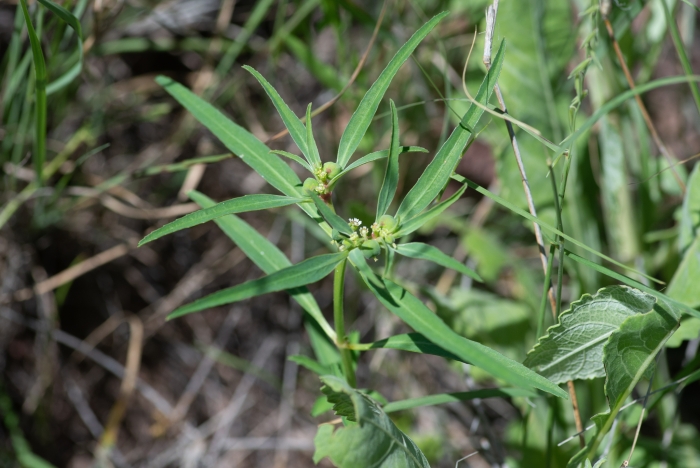African Milk Barrel
(Euphorbia exstipulata)
African Milk Barrel (Euphorbia exstipulata)
/
/

Daniel McNair
CC BY 4.0
Image By:
Daniel McNair
Recorded By:
Copyright:
CC BY 4.0
Copyright Notice:
Photo by: Daniel McNair | License Type: CC BY 4.0 | License URL: http://creativecommons.org/licenses/by/4.0/ | Rights Holder: Daniel McNair | Publisher: iNaturalist | Date Created: 2022-08-31T10:33:21-07:00 |

























Estimated Native Range
Summary
Euphorbia exstipulata, commonly known as African Milk Barrel, is an annual herb native to arid and semi-arid regions of Southern Africa, particularly thriving in open savannas and grasslands. It typically grows to a height and width of 0.6-1 feet (0.18-0.3 meters), forming a compact shape. The plant is characterized by its small, yellow, inconspicuous flowers that bloom in the summer, and it is more noted for its foliage and unique form than for its floral display. The stems contain a milky sap that is characteristic of the Euphorbia genus.
African Milk Barrel is valued for its drought tolerance and unique appearance, making it a suitable choice for xeriscaping, rock gardens, and as a curiosity in succulent collections. It requires minimal maintenance, thriving in full sun and well-draining sandy or loamy soils with low water needs once established. Gardeners should handle this plant with care due to its toxic sap, which can cause skin irritation and should not be ingested. It is not commonly afflicted by diseases or pests, but overwatering can lead to root rot.CC BY-SA 4.0
African Milk Barrel is valued for its drought tolerance and unique appearance, making it a suitable choice for xeriscaping, rock gardens, and as a curiosity in succulent collections. It requires minimal maintenance, thriving in full sun and well-draining sandy or loamy soils with low water needs once established. Gardeners should handle this plant with care due to its toxic sap, which can cause skin irritation and should not be ingested. It is not commonly afflicted by diseases or pests, but overwatering can lead to root rot.CC BY-SA 4.0
Plant Description
- Plant Type: Herb
- Height: 0.6-1 feet
- Width: 0.6-1 feet
- Growth Rate: Moderate
- Flower Color: Green, Pink, White, Yellow
- Flowering Season: Summer, Fall
- Leaf Retention:
Growth Requirements
- Sun: Full Sun
- Water: Low
- Drainage: Fast
Common Uses
Border Plant, Drought Tolerant, Low Maintenance, Rock Garden
Natural Habitat
Arid and semi-arid regions, particularly open savannas and grasslands
Other Names
Common Names: Square-Seed Spurge
Scientific Names: , Euphorbia exstipulata, Chamaesyce exstipulata, Euphorbia aliceae, Euphorbia exstipulata var. exstipulata, Euphorbia exstipulata var. lata, Zygophyllidium exstipulatum, Zygophyllidum exstipulatum,
GBIF Accepted Name: